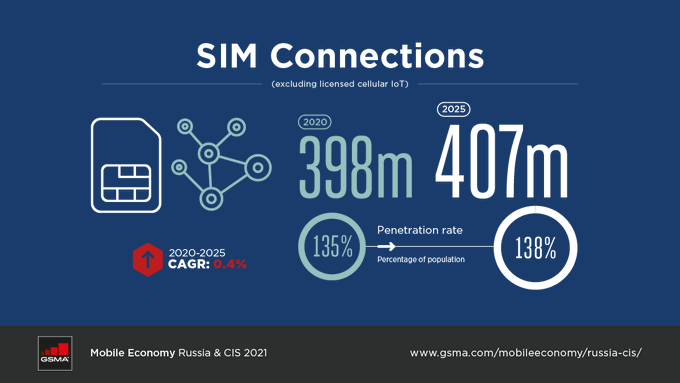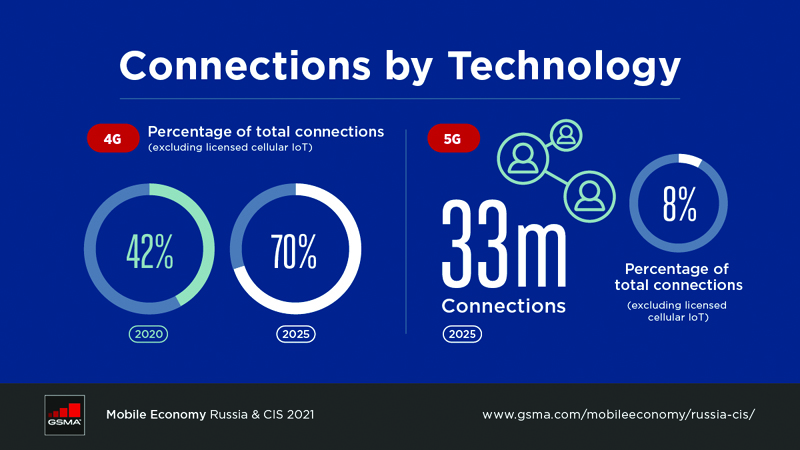MOSCOW/SAN FRANCISCO, SEP 27
The mobile technologies and services contributed $143 billion to economies in the CIS region in 2020. That number is forecast to reach $160 billion by 2025, a 12% increase in the industry’s 2020 contribution. These were the findings revealed at Mobile 360 Eurasia event in Moscow last week from the GSMA’s report, ‘The Mobile Economy Russia & CIS 2021’, highlight that the growth will be driven by productivity and efficiency gains delivered by the increased adoption of mobile services.

GSMA opened its Mobile 360 Eurasia event in Moscow. The event will bring together Eurasia’s brightest thinkers to explore the region’s most pressing mobile challenges and opportunities, including fintech, value creation, and digital resilience.

The pandemic underlined the importance of access to fast, reliable internet and a range of digital services for both individuals and businesses. Throughout, the mobile industry kept citizens connected across the region by offering call and data tariff discounts, providing free access to entertainment and healthcare services, and donating to national Covid-19 relief funds. By the end of 2020, the number of unique mobile subscribers in the region had increased to 238 million and 1.3 million connected to mobile for the first time.
At live events content creators need to move fast. Watch @TimJumphreys use Verizon 5G Ultra Wideband and @GoPro to shoot, edit and post at lightning speeds.
@12WillPower @Team_Penske #TheBrickyard #Verizon200 #5GBuiltRight pic.twitter.com/Zx8NN1dZBJ
— Verizon (@Verizon) September 23, 2021
The outlook for 5G rollout in the region remains conservative; field trials are ongoing but, deployments are slow. Only Uzbekistan has reached the commercialization stage thus far. Mobile operators across the region will invest more than $26 billion in their networks in the next five years and, an increasing proportion of this investment will be in 5G. By 2025 the region is forecast to achieve 33 million 5G connections.

“Until recently, deploying 4G across the Russia and CIS region has been the industry’s main priority. Now with smartphone adoption rapidly increasing, we expect an imminent pivot to 5G in some – more advanced – markets,” said GSMA Director General Mats Granryd. “To accelerate this, we need policies that drive take-up and attract investments.”
The shift from 4G to 5G aside, intense price competition across the region also drives mobile operators to diversify their portfolios to generate new income streams beyond core connectivity. These include a range of consumer- and business-focused services such as pay-TV, media and advertising, cloud, security and financial services, along with solutions for vertical industries.
The success of 5G services is heavily reliant on national governments and regulators. The speed, reach, and quality of these services depend on governments and regulators supporting timely access to the right amount and type of affordable spectrum under the right conditions.












